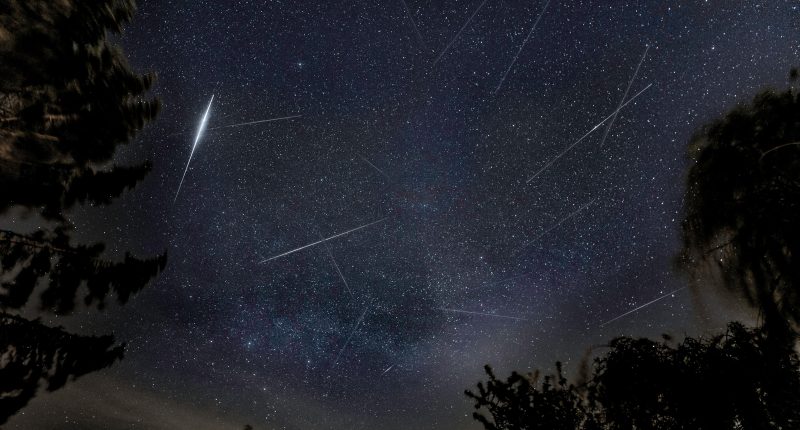THE LYRID meteor shower, among the oldest known to humankind, is to reach its maximum visibility over the next few days.
Onlookers should be able to see roughly 18 shooting stars per hour in on the morning before and after the peak.
The annual display will reach its maximum on April 22 and April 23.
According to Nasa, the first recorded Lyrid sighting happened in China around 2,700 years ago.
Last year’s display had better visibility than usual due to the lunar cycle.
This year, however, the view may be marred by brightness of the Full Moon.
READ MORE ON SPACE
The Lyrid involves fast-moving meteors associated with Comet Thatcher.
According to the Royal Greenwich Observatory, the best time to see the shower is generally in the early morning of the peak day, while it’s still dark.
“Wait until after midnight when the radiant point, in the constellation of Lyra, will have risen in the East,” the Observatory advises.
“The later in the morning you wait, the higher the radiant will rise and the fewer meteors will be hidden below the horizon.
Most read in Tech
“But the closer you get to sunrise the brighter the sky is going to become, so plan accordingly!”
How to see the Lyrid meteor shower
To see them for yourself, head to a location well away from light pollution.
Make sure that your star gazing spot has an unobstructed view of the horizon and above.
Away from treelines or cityscapes is best.
Having a pair of binoculars to hand can never hurt, either.
“You’ll see the most meteors by looking slightly away from the origin point, which is near the bright star Vega,” Nasa said.
To find Vega, it might help to download an astronomy app for star gazers which shows where each constellation sits in the sky.
Find out more about science
Want to know more about the weird and wonderful world of science? From the Moon to the human body, we have you covered…
This post first appeared on Thesun.co.uk











